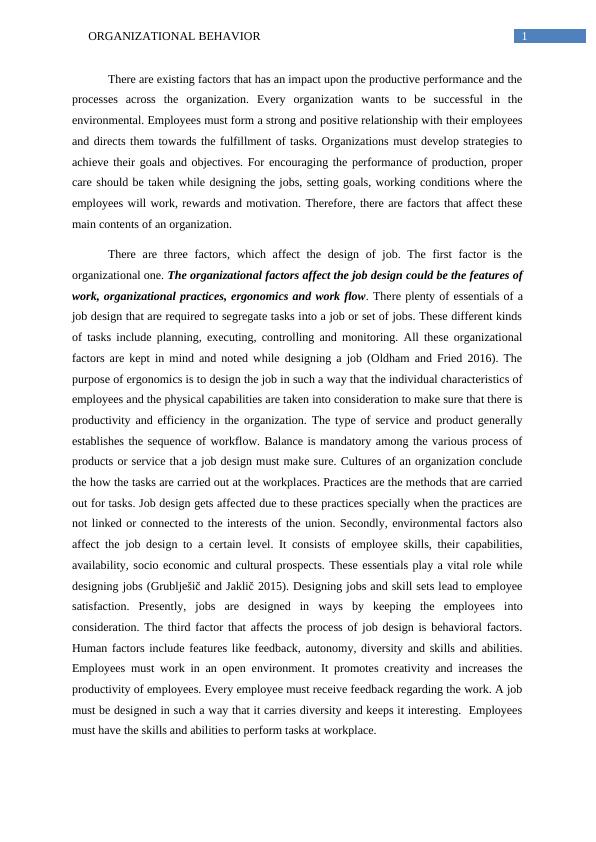Factors Affecting Organizational Behavior: Job Design, Working Conditions, Goal Setting, Motivation and Rewards
7 Pages2156 Words410 Views
Added on 2023-06-15
About This Document
This article discusses the factors that affect organizational behavior, including job design, working conditions, goal setting, motivation, and rewards. It also explores the impact of these factors on employee productivity and performance.
Factors Affecting Organizational Behavior: Job Design, Working Conditions, Goal Setting, Motivation and Rewards
Added on 2023-06-15
ShareRelated Documents
End of preview
Want to access all the pages? Upload your documents or become a member.
HRM514 - Essay On Human Resource Management in Australia
|12
|3882
|48
Employee and workplace productivity: An interconnected term
|13
|3276
|423
Analysis of Organizational Behavior Critique
|7
|1984
|33
Organizational Behavior - Assignment PDF
|4
|1263
|105
Analyzing Human Factors in Organizations
|9
|1629
|50
The Management of Organizational Justice - Desklib
|9
|495
|349



